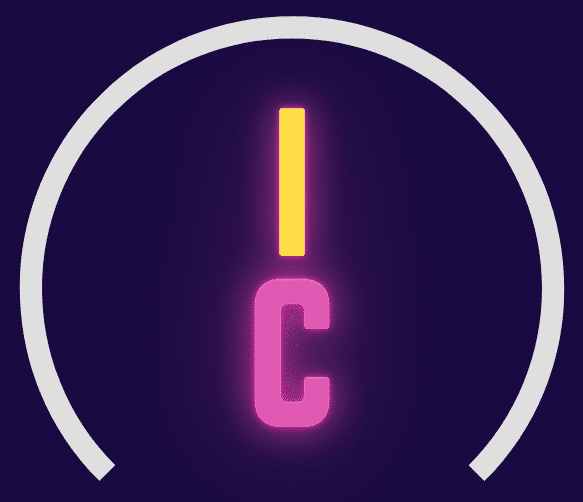There comes a point in most successful product stocks where they become predictable. Apple used this tactic with the iPhone and iPad for several generations, and Microsoft did the same with the Surface Pro in recent years. Don't rock the boat; don't fix what isn't broken.
So, if you've seen last year's Galaxy S8 from Samsung, you've seen this year's Galaxy S9. Of course, Samsung is Samsung, there are a lot of new gimmicky features crammed into it, so there's something to show for the ads.
That's not to say that the Galaxy S9 and larger S9 Plus are bad phones; the S8 was an excellent phone last year, and the S9 builds on that. If you're planning to buy a new phone in 2018 and are willing to spend between $ 700 and $ 900 (the unlocked S9 retails for $ 719.99 while the S9 Plus cost $ 839.99 , carrier pricing varies), the S9 or S9 Plus will surely be one of the best options available. They will be the most popular Android smartphones released this year, hands down.
But three years after the major design change from Samsung, we already know what a premium Samsung phone is. It's predictable, both the good things (screen, design) and the bad (software). The Galaxy S9 is the most predictable Samsung phone so far.
/cdn.vox-cdn.com/uploads/chorus_asset/file/10358413/akrales_180305_2350_0160.jpg)
The S9's design, screen, and specs provide zero surprises, but those are the things that influence your daily use of the phone more than anything else. For the most part, Samsung hit the basics.
Although the overall design and look of the S9 pair is the same as the S8, it is no less attractive or impressive to look at. I
The S9 has a 5.8-inch display, while the S9 Plus has a wide 6.2-inch screen. Both are high-resolution, both are OLED panels with vibrant colors (sometimes very vibrant), and both have excellent viewing angles. The screens are also a bit brighter this year, which is always appreciated on sunny days. Samsung is quick to tell you that the S9 doesn't have a notch that interrupts the screen, but it doesn't have the most immersive display either.
/cdn.vox-cdn.com/uploads/chorus_asset/file/10358449/akrales_180305_2350_0385.jpg)
/cdn.vox-cdn.com/uploads/chorus_asset/file/10358447/akrales_180305_2350_0387.jpg)
/cdn.vox-cdn.com/uploads/chorus_asset/file/10358445/akrales_180305_2350_0390.jpg)
The S9 also has other Samsung hardware assets: wired and wireless fast charging, IP68 water resistance and 3.5mm headphone jack.
If you're looking for a high-end phone with a headphone jack in 2018, you have fewer options than ever, so I'm very happy to see Samsung no modified this aspect of the phone.
Last year, Samsung debuted a dedicated button for its Bixby virtual assistant on the S8, and it's in the same spot just below the volume buttons on the left side of the S9. You can now disable Bixby launch, which is progress, but Samsung still doesn't provide a native way to reprogram it for something more useful. At worst, it's annoying, at best, it's a little button you can press without having to worry about it doing anything.
So what's really new? Two things: the fingerprint scanner has been moved to a much easier-to-reach location on the back of the phone, and the single speaker has been upgraded to a stereo pair.
The S8's fingerprint scanner was a frustrating experience: it was small, hard to reach, and right next to the camera, which meant most of the time, I ended up with fingerprints on the camera lens. The S9's scanner has been moved right below the camera, making it much easier to reach, especially on the larger S9 Plus.
It's still small, especially compared to scanners on other phones, and it's still too close to the camera. I've often found myself swiping the camera lens when trying to use the gesture to open the notification tray.
In an obvious attempt to replicate Apple's Face ID system, Samsung has introduced a new combined face scan/iris scan feature that can be used to unlock the phone instead of the fingerprint scanner. It will use either the more secure iris scanner or the faster but less secure face scanner, depending on the lighting conditions you are in. However, it is slow, flashes an annoying red light when you activate the iris scanner, and never feels as seamless as Face ID. The good thing is that the fingerprint scanner is easier to use now.
The new stereo speakers are more successful: they're louder, clearer, and more pleasant to listen to than the S8's single speaker. Samsung is trying to catch up here, many other phones have had stereo speakers for years, but I'm happy to finally see and hear them on a Galaxy phone. They are not the bestspeakers I have heard on a telephone, but they are more than enough.
The rest of the S9's upgrades are under the hood: it's running Qualcomm's latest processor (in North America, other markets will see Samsung's own Exynos processor), 4GB (S9) or 6GB (S9 Plus) of RAM, and a new LTE modem that supports even faster gigabit speeds. Those are specs we're likely to see in almost every Android browser this year, but Samsung is the first with them out of the gate.
Performance, at least during my review, has been excellent: the phone is snappy and responsive, with smooth scrolling and fast app launches. Network performance has also been as impressive as the S8, and noticeably better than my iPhone experience.
I really would have liked to have seen Samsung increase the battery size this year.
/cdn.vox-cdn.com/uploads/chorus_asset/file/10358401/akrales_180305_2350_0068.jpg)
The big news that Samsung wants everyone to know is the new rear camera of the S9. The 12-megapixel image sensor is new and improved, with better image processing, but the main change is in the lens, which can now physically switch between a very bright f / 1.5 aperture and a smaller f / 2.4 aperture, similar to larger cameras work. The S9 Plus model gains a second camera for zoom and portrait mode effects, just like Samsung launched with the Note 8 last year. There is less noise than the S8 images and the colors are pleasing.
But all images have a Samsung-specific "look" that is warmer, very saturated and has imperfections (and sometimes details) smoothed out. It's quite different from what Apple or Google cameras produce, and deciding between them often comes down to personal preference. On a technical level, all the high-end phones available now can capture excellent photos. Chances are, if you weren't a fan of Samsung's image processing before, you still won't like it.
I am less impressed with the switching aperture function. It feels more like a parlor trick than anything else. The S9's auto mode will switch between settings depending on lighting conditions, but the pro mode lets you decide which aperture you want to use. Since the camera can increase its shutter speed to compensate for more light, I don't know why I would ever use f / 2.4 when an f / 1.5 lens is available. I'd rather have a faster shutter speed or lower ISO setting than a slightly smaller aperture in virtually any situation.
The ability to change apertures is tempting, and the principle is photographically sound. On a larger camera, controlling aperture could generate sharper images or better exposure in lighting conditions. It also allows more creative control to produce long exposure effects or separate the subject from the background. But those assumptions about larger camera lenses don't apply directly to the small lenses and sensors found in a phone.
Based on my testing, there is no appreciable difference in sharpness between the two apertures. Since the small lens and the sensor already have depths of field very deep, closing the aperture on the S9 has minimal effect on what is in focus.
The S9 Plus's second telephoto lens is similar: Samsung's live portrait mode isn't as good as Apple or Google at separating a subject from the background, and in difficult lighting conditions, the image quality is pretty poor. You should buy the S9 Plus over the S9 if you want a larger screen or longer battery life, but not for its second camera lens.
The S9 can shoot 4K video at 60 frames per second, or 1080p slow-motion video at 240 frames per second, which catches it with what the iPhone can do. (I expect all Android flagship phones to have both of these video modes this year.) Both modes produce very good quality video, but you have to make sure you have plenty of light for the slow motion mode, or you'll see a lot of image noise.
On the front camera, things haven't changed since last year. It's the same 8-megapixel camera as the S8.
/cdn.vox-cdn.com/uploads/chorus_asset/file/10358427/akrales_180305_2350_0251.jpg)
As expected, things that don't work invariably involve software.
There's AR Emoji, Samsung's version of the iPhone X's Animoji feature. You then take this character and create a set of reaction GIFs with it that you can send via the keyboard. There are also some weird looking animals that you can create video clips with like you can with Animoji.
There are a couple of problems with Samsung's AR Emoji. The animal characters are equally weird. It's definitely something Samsung created just to compete with Apple, and it's not very good.
Next is the new Super Slow Motion mode on the camera. In addition to the 240 frames per second slow-motion capture mentioned above, the S9 can shoot up to 960 frames per second. That sounds great, but the S9 can only do it for 0.2 seconds at a time (which stretches to six seconds when played back) and at only 720p resolution.
/cdn.vox-cdn.com/uploads/chorus_asset/file/10358453/akrales_180305_2350_0440.jpg)
Bixby isn't new, but it's still here, and it's just as badass as it was when it was launched last summer . The virtual assistant has a couple of new features: there's an integrated makeup store that lets you try on makeup virtually and then purchase it directly from Sephora or Cover Girl, and a calorie detection feature that uses the science to estimate how many calories are in the Donut, you're about to eat. (Neither feature is something I expect anyone to use more than once). It's fair to say that, at this point, Bixby is a colossal failure as a smartphone assistant.
And then there's the perennial complaint with Samsung's software: why are there so many duplicate apps? The unlocked S9 I've been testing has two email apps, two gallery apps, two browsers, and two app stores. The carrier versions will likely have even more duplicate apps. If you care about software updates, Samsung is one of the worst manufacturers when it comes to offering new versions of Android. As of this review, last year's Galaxy S8 still doesn't have Android 8.0 in the US.
/cdn.vox-cdn.com/uploads/chorus_asset/file/10358425/akrales_180305_2350_0210.jpg)
The upshot of most of this is that you can ignore Samsung's marketing-centric gimmicks and actually enjoy the Galaxy S9 (and none of them fall to the level of software problems from other Android manufacturers). You can disable Bixby, never bother with AR Emoji or super slow motion, and disable most Samsung apps. That leaves Samsung's poor software update history as the big sticking point for many people.
The rest of the S9 and S9 Plus is as good as we expected. It has a head-turning design, fast performance, a great screen, and a very good camera.
Predictably, Samsung has created another excellent flagship phone. But, predictably, it still has a lot of room for improvement.



Leave a Reply
You must be logged in to post a comment.